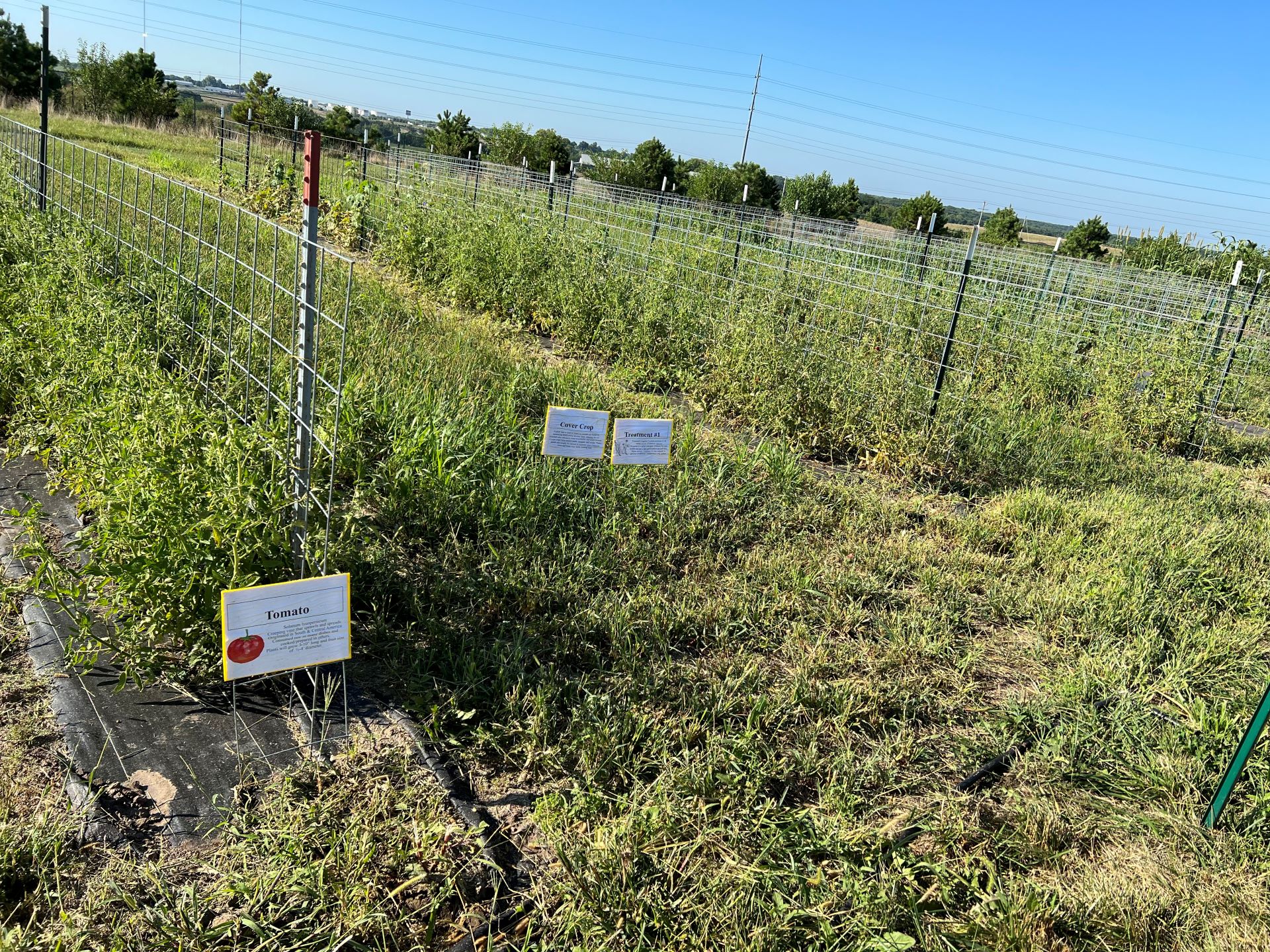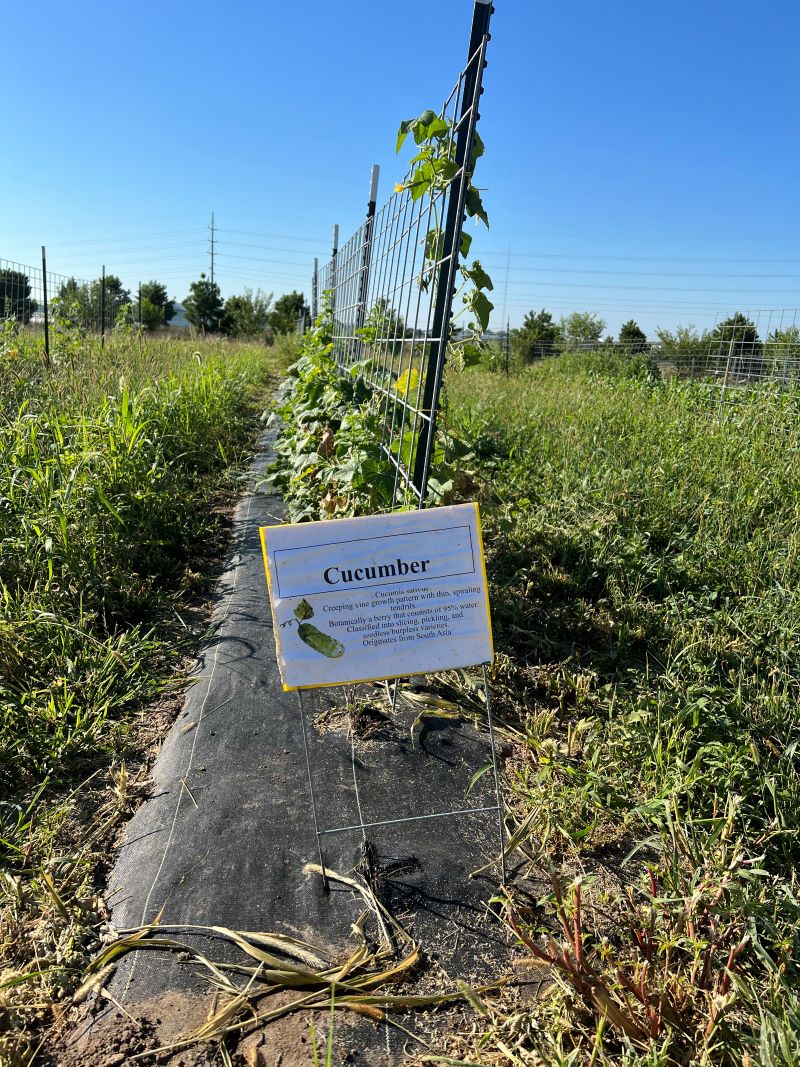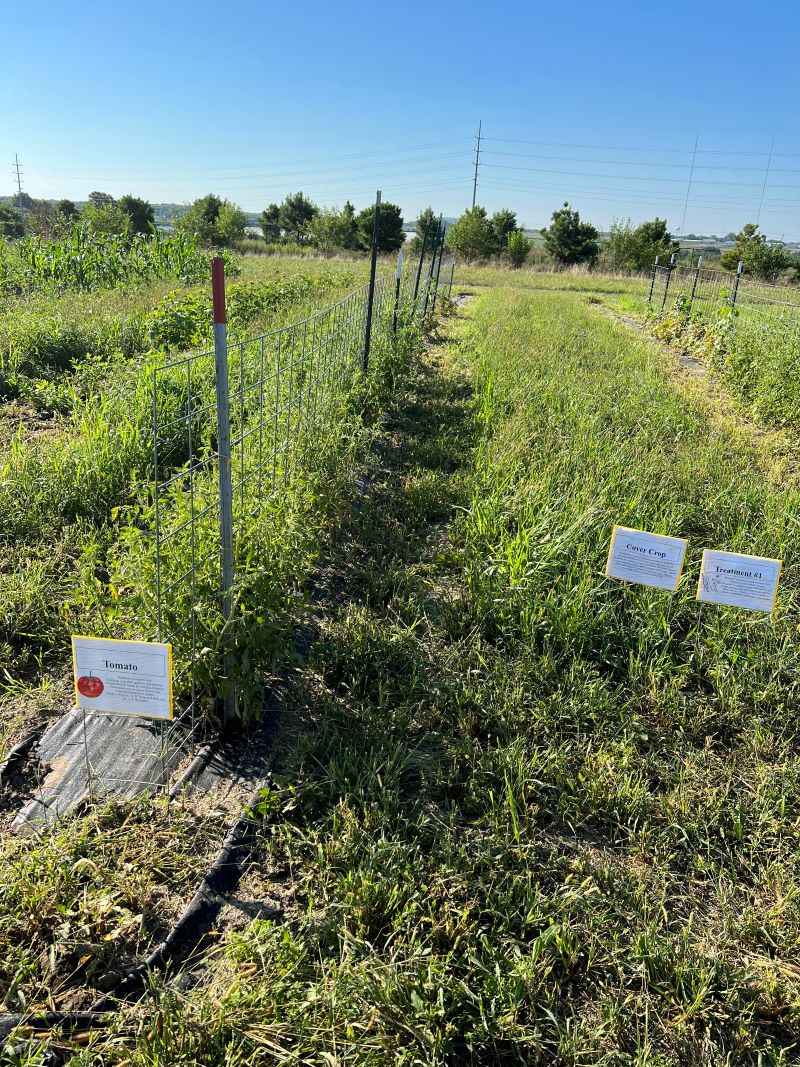Lincoln University of Missouri Researchers Tackle Weed Control in Organic Crops
 A team of researchers led by soil scientist Tunsisa Hurisso is digging into new ways to help organic producers enhance the productivity and health of environmentally sensitive soils in Missouri.
A team of researchers led by soil scientist Tunsisa Hurisso is digging into new ways to help organic producers enhance the productivity and health of environmentally sensitive soils in Missouri.
It isn’t easy being green.
That’s the sad refrain of organic farmers and gardeners — especially when weed growth kicks into high gear — but they may soon find tips on weed control sprouting from the experimental plots at Lincoln University’s Alan T. Busby Farm.
A team of researchers led by soil scientist Tunsisa Hurisso is digging into new ways to help organic producers enhance the productivity and health of environmentally sensitive soils in Missouri. The group received a three-year, $500,000 grant from the U.S. Department of Agriculture last year to focus on alternative methods of weed management that will lead to increased crop yields while controlling weed and pest growth.

Above, cucumber production beds are being separated by traffic paths, or walkways, that are seeded with an occasionally-mowed ryegrass/white clover mix. (Photo by Tunsisa Hurisso/Lincoln University of Missouri).
Weed management poses one of the greatest challenges to growing organic crops, accounting for the bulk of production costs. Organic weed control can be labor intensive, expensive or just plain ineffective after a certain stage of growth. Many turn to tillage to uproot weeds, but excessive soil disturbance can lead to weed seed flushes, erosion and loss of valuable soil. The obstacles are enough to make some farmers turn away from organic production and others think twice about adopting organic practices. Hurisso’s team hopes to stem that resistance by finding cover crop combinations that enhance soil health as they crowd out weeds and deter insect pests and diseases to improve crop yields.
“We hope to offer a more sustainable method of weed control as well as to help build up soil organic matter,” Hurisso says.
In 2021, the first year of the project, the research team designed and planted four plots of ground at the university’s Alan T. Busby Farm, a certified organic research farm. Each plot contains vegetable production beds of cucumbers, kale and tomatoes separated by traffic paths, or walkways, between each crop. The traffic paths within three of the plots were seeded with cover crops. The fourth plot is a control plot with traffic paths dependent on tillage for weed management.

Above, tomato production beds are being separated by traffic paths, or walkways, that are seeded with an occasionally-mowed ryegrass/white clover mix. This perennial cover crops mix has the advantage of creating a stable environment for beneficial insects in addition to suppressing weeds, minimizing erosion, and building up soil organic matter. (Photo by Tunsisa Hurisso/Lincoln University of Missouri).
After harvest, the vegetable beds will be planted in an off-season cover crop mixture of winter wheat and Austrian winter peas (except for the no-cover tilled control plot). The winter wheat and peas will be tilled into the soil next spring to help provide nitrogen for next season’s vegetable crops.
Researchers are currently evaluating the benefits of the different cover crop combinations. Two plots contain perennial cover crops in the traffic paths with the added bonus of creating a stable environment for beneficial insects and pollinators. One plot contains a ryegrass/white clover mix and another uses an orchard-grass/red clover blend; the third plot has an annual cover crop of sorghum-sudangrass and annual sweet clover in its walkways.
In the fourth year of the study, the vegetable beds will switch to the traffic paths where cover crops have been growing and the old vegetable beds will be planted with cover crops.
“We are integrating living perennial cover crops that can be moved occasionally into vegetable rotations to offer a more sustainable method of weed control as well as to help build up soil organic matter better than annual cover crops or tillage,” Hurisso says. “When vegetable beds are moved over to where cover crops had been grown for three consecutive years, we expect to see improvement in soil health and greater nutrient cycling, as well as reduction in weed and disease pressure.”
The research team includes co-investigators Touria Eaton, Clement Akotsen-Mensah, Jaimin Patel and Ye Su of Lincoln University Cooperative Research & Extension and Timothy Reinbott of University of Missouri Extension. To widen the project’s outreach, the group has also established cover crop demonstration plots at MU’s Jefferson Farm and Garden. This fall, the study will expand to three vegetable farms in the state to support on-farm research and innovation, Hurisso says. The collaborating on-farm trials will serve as a venue to host field days to promote peer-to-peer learning.
“By engaging farmers directly in research, we can generate new insights into challenges that limit adoption of organic farming by vegetable producers, identify promising innovations and secure greater farmer buy-in for implementing solutions,” Hurisso says. “That is why we believe this project — which was developed with considerable input from organic and nonorganic vegetable farmers — is so important. We want to provide Missouri’s vegetable growers with valuable insights into sustainable and climate-smart practices that promote soil health and agricultural stewardship while still supporting production of economically valuable horticultural crops.”